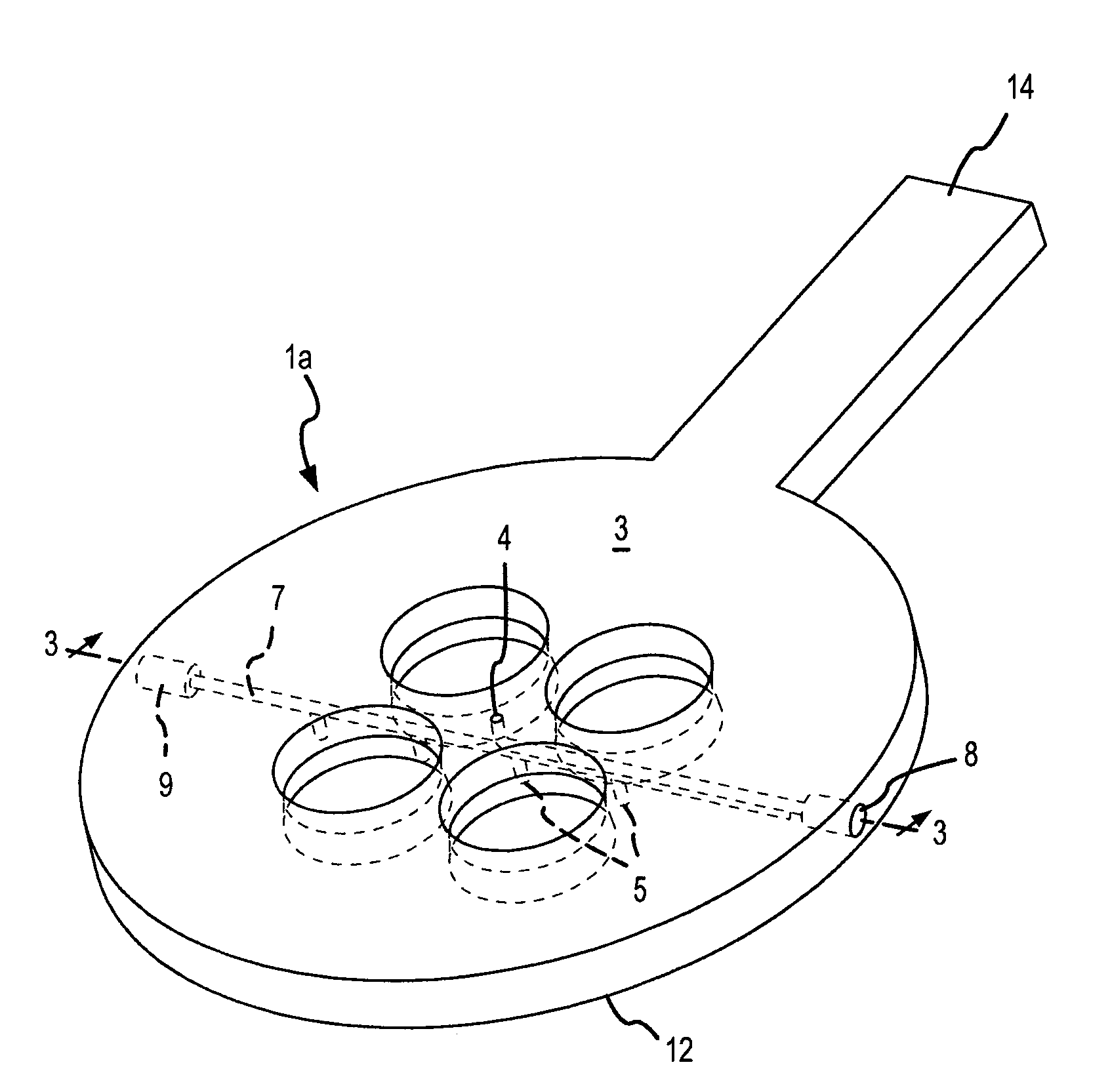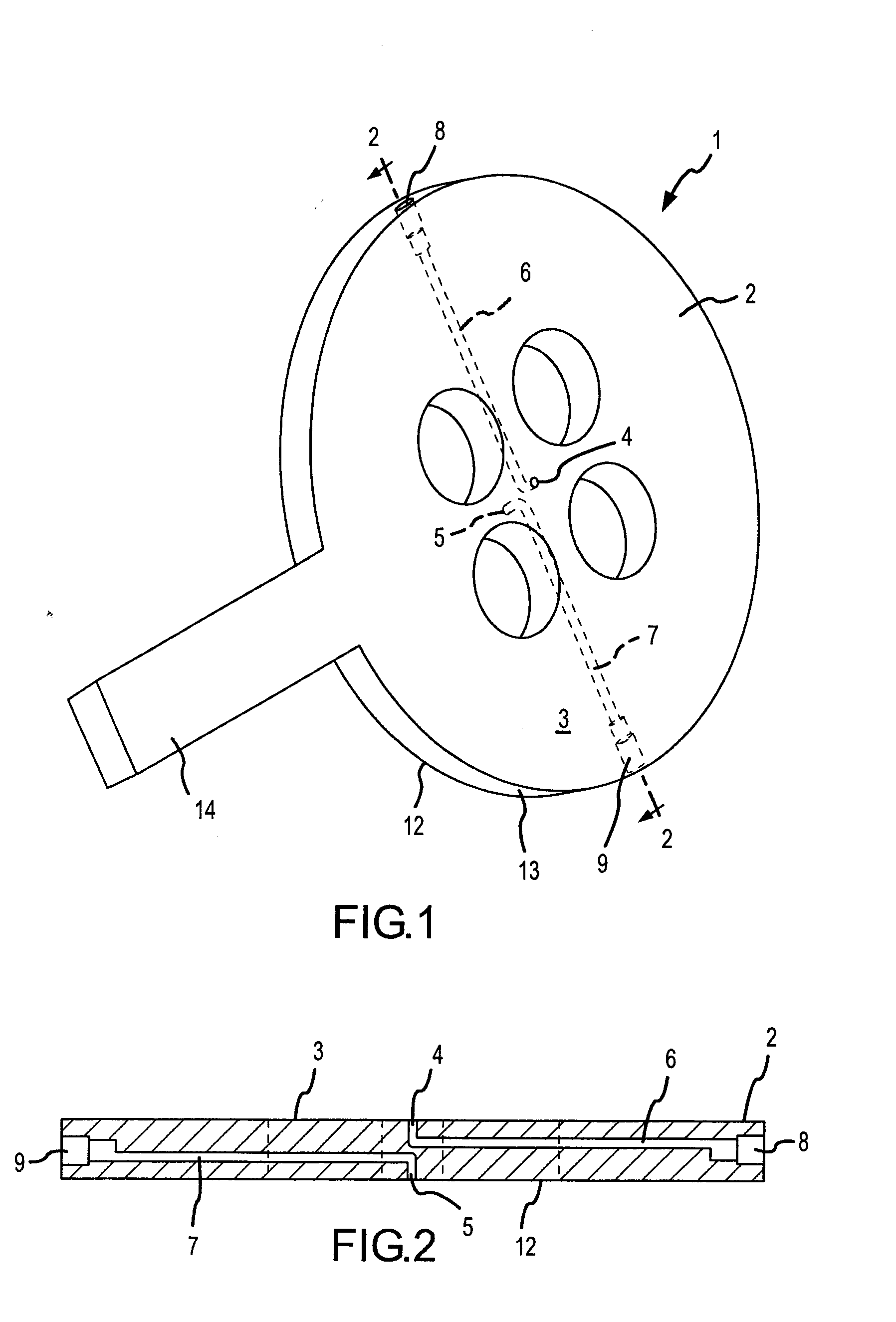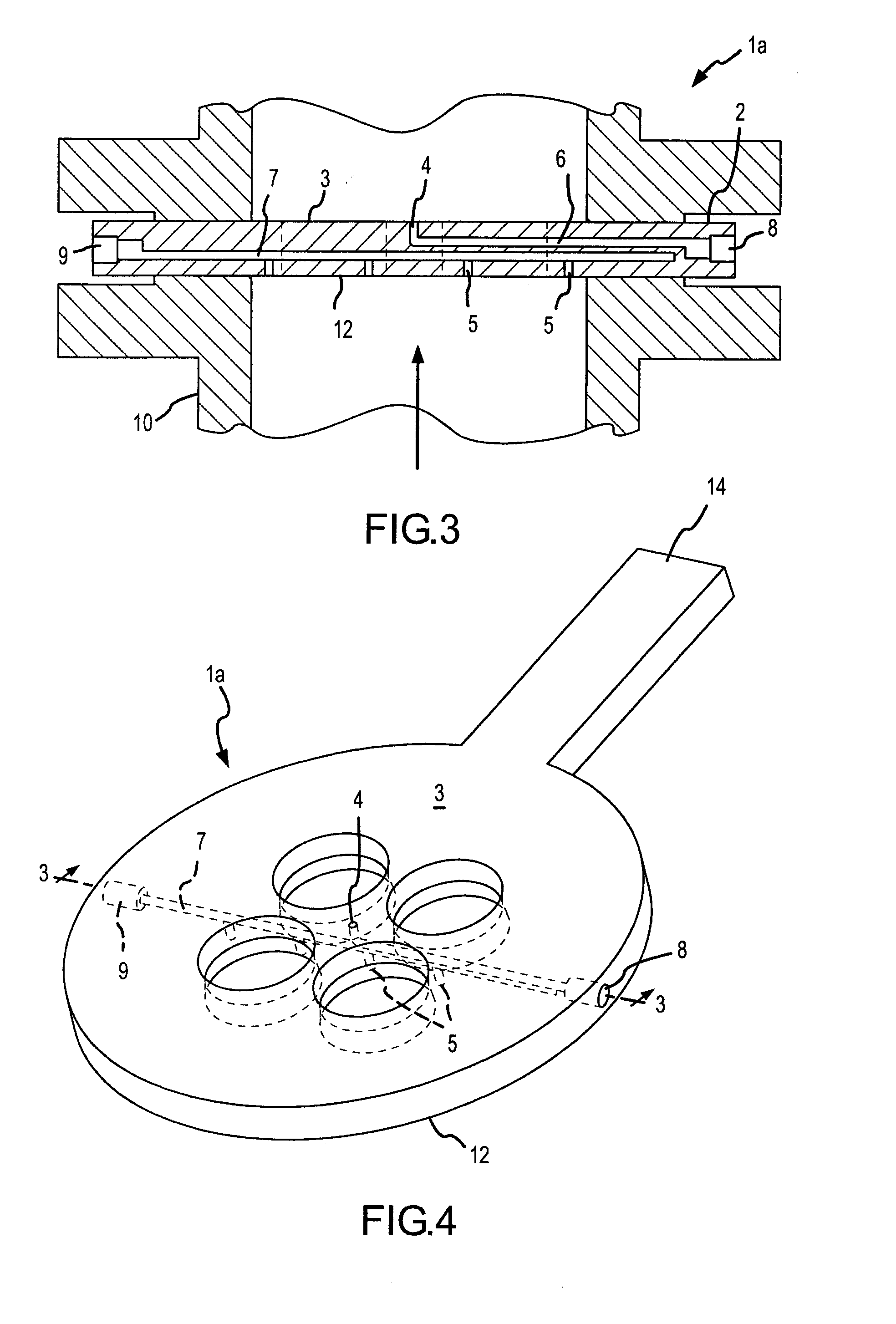Locating Of Pressure Taps On Face Of Orifice Plate Device
- Summary
- Abstract
- Description
- Claims
- Application Information
AI Technical Summary
Benefits of technology
Problems solved by technology
Method used
Image
Examples
Embodiment Construction
[0021]A simplified version of the present invention is shown in FIGS. 1 and 2. The averaging orifice plate flow element comprises a flat plate 1 having a circular portion 2 and a stem 14. On a diametric line across the circular portion there is disposed within the plate a first conduit or bore 6 that interconnects the opening 4 in the downstream face 3 of the circular portion 2 of the plate to a first pressure sensing port 8 disposed in the circumferential edge 13 of the circular portion 2 of the plate. A second conduit or bore 7 interconnects an opening 5 in the upstream face 12 of the plate to a second pressure sensing port 9 in the circumferential edge 13 of the circular portion 2. The pressure ports are arranged to be connected to a traditional fluid manifold (not shown) and into a pressure transducer (not shown). An electrical signal that represents the sensed differential pressure between the ports 8 and 9 is transmitted by transmitter (not shown) to a processing unit (not sho...
PUM
 Login to View More
Login to View More Abstract
Description
Claims
Application Information
 Login to View More
Login to View More - R&D
- Intellectual Property
- Life Sciences
- Materials
- Tech Scout
- Unparalleled Data Quality
- Higher Quality Content
- 60% Fewer Hallucinations
Browse by: Latest US Patents, China's latest patents, Technical Efficacy Thesaurus, Application Domain, Technology Topic, Popular Technical Reports.
© 2025 PatSnap. All rights reserved.Legal|Privacy policy|Modern Slavery Act Transparency Statement|Sitemap|About US| Contact US: help@patsnap.com



